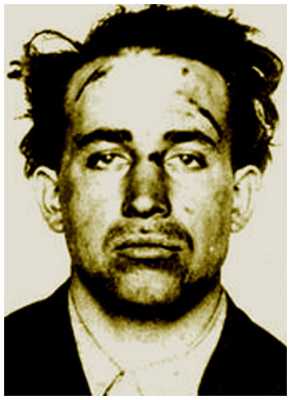Great Basin Serial Killer

Where: Arkansas, Kentucky, Mississippi, Pennsylvania, Tennessee When: 1978-1992 How Many: 6-11 The Redhead Murders were a string of killings committed along major highways throughout the United States, primarily in the 1980s. The first killing definitively tied to the Redhead Murders occured in 1983, although some believe that a killing in 1978 is connected to the case. Of the six victims police are certain were killed by the same person, only one has been identified, leading many to believe that the killer targeted not just redheads, but redheads who were engaged in either hitchhiking or sex work. Two suspects were interviewed in connection to the murders, yet the killer was never identified.
A US Border Patrol agent has been arrested in the state of Texas on suspicion of killing four prostitutes, reports say. Officers were looking for Juan David. “Zerga says the profilers believe Eaton could also be a good match for the Great Basin Serial Killer responsible for a slew of murders of women in Nevada, Utah, Wyoming and Colorado in the 80s and 90s.
Where: Northern California When: 1960s and 1970s How Many: 5 Killed, 2 Injured The Zodiac Killer transfixed the nation throughout the late 1960s and 1970s, due both to the brutality of his crimes and the way in which he toyed with authorities and the media. He sent numerous letters and cryptograms to the press, daring the public to crack his puzzles and catch him. Of the encrypted messages, just one was deciphered, by a history professor and his wife.

Chillingly, it revealed that the Zodiac killed in order to collect slaves for his afterlife. The Zodiac claimed responsibility for 37 murders.
However, investigators agree upon seven attacks in total: a cab driver and three different sets of male-female couples. Of the seven attacks, two men survived, bringing the Zodiac’s official body count to five. A number of books and films about the killer’s crimes have been released over the years. Some of these works examine the case, while others, such as Gary L.
Stewart’s, purport to solve it. Nevertheless, officially, the killer’s identity remains unknown. Where: Rochester, NY When: 1971-1973 How Many: 3 In the early 1970s, three young girls were raped, then strangled around Rochester, New York. Dj vu crosby stills nash young rarity.
Other than the manner of their death, the girls had one thing in common: Their names were alliterative. The girls’ bodies were left in towns that started with the same letter as their names. Carmen Colon was dumped in Churchville, Michelle Maenza in Macedon, and Wanda Walkowicz in Webster. Related: A similar modus operandi was observed in California serial killer Joseph Naso, who murdered (a different) Carmen Colon, Pamela Parsons, Roxene Roggasch, and Tracy Tofoya. A reference in Naso’s journal to the death of a girl in the Buffalo woods led investigators to test Naso’s DNA against DNA found at the Rochester crime scenes. The DNA was not a match.
Since then, the Alphabet murders have remained unsolved. Where: Highway 16, British Columbia When: 1969-2011 How Many: 16-40 A shocking number of young women have disappeared or been murdered along a desolate stretch of highway in British Columbia. The cases date back to 1969, and the sheer number of victims coupled with this length of time have led investigators to conclude that the Highway of Tears murders are the work of multiple killers.
Many of the victims are First Nations women, leading locals to contend that racism played a part in the attacks as well as the lack of progress made in each case. Royal Canadian police have suspected American killer Bobby Jack Fowler as being responsible for killing anywhere from 10 to 20 of the victims.
A Canadian serial killer, Cody Legebokoff, was convicted of one of the. Despite this progress, the police do not believe that they will ever solve all 40+ of the murders that have occurred along this stretch of highway. In many of the cases, too much time has lapsed. In others, there is simply not enough evidence to charge suspects. Where: Washington, D.C. When: 1971-1972 How Many: 6 In 1971, a killer began haunting the Northeast neighborhood of Washington, D.C.